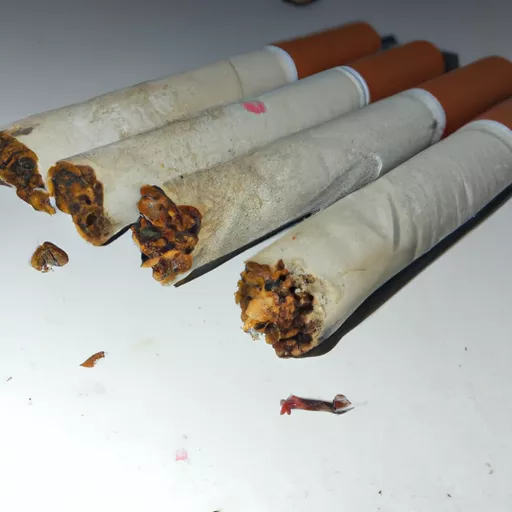little cigars that look like cigarettes

As someone who enjoys trying new cigars, I have recently stumbled upon the world of little cigars and have been pleasantly surprised by their unique flavors and aromas. Little cigars, also known as cigarillos, are smaller and thinner versions of traditional cigars, providing a quick and convenient smoking experience for those short on time. In this article, I will explore the history, production process, flavors, and overall experience of little cigars.
Little cigars first originated in Spain during the 19th century when cigarettes were becoming increasingly popular but were still seen as a lesser form of tobacco consumption. Tobacco companies began creating smaller versions of their cigars to cater to those looking for a more sophisticated and luxurious smoking option. Little cigars were also popular amongst women at the time due to their smaller size and less potent strength.
Today, little cigars are predominantly produced in the Dominican Republic, Honduras, and the Philippines, using high-quality tobacco leaves. The production process is similar to that of traditional cigars, with leaves being carefully dried, cured, and fermented to achieve the desired flavors and aromas. However, since little cigars are smaller, they require less time to ferment, resulting in a smoother and milder taste.
One of the most appealing aspects of little cigars is the wide variety of flavors available. Unlike traditional cigars, which are typically only available in a few varieties, little cigars come in an array of flavors ranging from fruity to traditional tobacco. Some popular flavors include cherry, vanilla, chocolate, and even coffee. These flavors are achieved by adding natural or artificial flavorings to the tobacco leaves during the fermentation process, providing a unique and enjoyable smoking experience.
Before lighting up a little cigar, it is important to know the proper way to smoke it. One should first remove the plastic or cellophane wrapper from the cigar and cut off the tip. Unlike traditional cigars, little cigars do not need to be cut with a cigar cutter, making them a convenient and hassle-free choice. To ensure an even burn, it is recommended to light a little cigar with a butane lighter or wooden matches, rather than a regular lighter.
As I lit up my first little cigar, the sweet aroma of vanilla filled the air, and I was immediately drawn in by its smooth and mellow taste. Unlike traditional cigars, which can sometimes be overpowering, little cigars offer a more subtle and enjoyable smoking experience. The smaller size also makes it easier to hold and smoke, and the shorter smoking time means I can enjoy a quick smoke break without dedicating a significant amount of time.
While little cigars may be smaller in size, they are not lacking in quality. They are made from premium tobacco leaves, providing a rich and flavorful smoking experience. This also means that little cigars produce less smoke than traditional cigars, making them ideal for those looking for a more discreet smoking option.
At first, I was skeptical about little cigars, thinking they may not offer the same satisfaction as traditional cigars. However, I have since come to appreciate them as a unique and flavorful addition to my cigar collection. They offer the same sophistication and relaxation as traditional cigars, but with added convenience and variety.
As I explored the world of little cigars, I also discovered that they are a more affordable option compared to traditional cigars. Since they require less tobacco to produce, manufacturers can offer them at a lower price point, making them accessible to a wider audience. This affordability factor, combined with their unique flavors and smooth smoking experience, makes little cigars a popular choice among college students and young professionals.
However, as with any form of tobacco, it is important to consume little cigars in moderation and in a responsible manner. Just like traditional cigars, little cigars contain nicotine and can be addictive. It is also worth noting that while little cigars may be cheaper than traditional cigars, the costs can add up over time if one becomes reliant on them.
In conclusion, my experience with little cigars has been nothing short of satisfying. From their intriguing history to their production process, flavors, and overall smoking experience, little cigars offer a convenient and enjoyable alternative to traditional cigars. Whether you are a seasoned cigar connoisseur or a curious beginner, I highly recommend giving a little cigar a try and discovering the unique flavors and aromas that they have to offer.